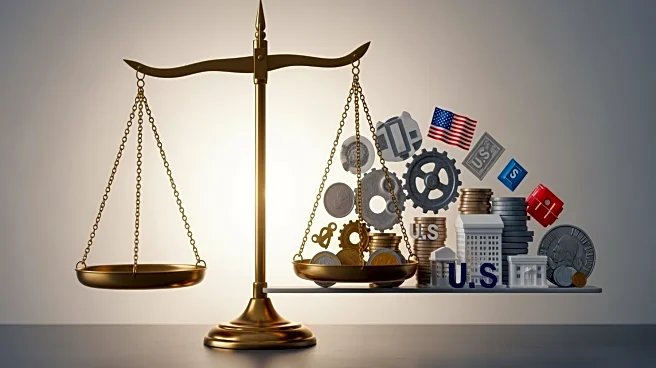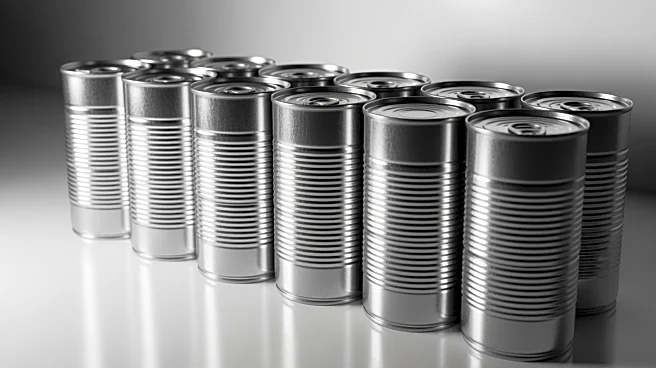What's Happening?
In a significant move, President Trump has announced a 39 percent tariff on imported gold bars weighing 100 ounces or more. This decision, effective from August 8, 2025, has caused a stir in global markets,
with U.S. December gold futures reaching an all-time high of $3,534.10 per ounce. The tariff primarily targets Switzerland, a major player in global gold refining, and aims to reduce U.S. reliance on Swiss gold imports. The measure is seen as a potential precursor to revaluing U.S. gold reserves, currently undervalued at $42 per ounce, to market prices around $3,200 per ounce.
Why It's Important?
The imposition of a 39 percent tariff on gold imports is a strategic move that could have far-reaching implications for the U.S. economy and global gold markets. By targeting Switzerland, the U.S. aims to disrupt its dominance in gold refining and reduce dependency on foreign gold. This tariff could also serve as a revenue generator for the U.S. government, given the high transaction volume of gold. Additionally, it may signal a shift in U.S. monetary policy, potentially leading to a revaluation of gold reserves and impacting the dollar's global position. The move could also deter money laundering by making large gold transactions more expensive.
Beyond the Headlines
The tariff could lead to unintended consequences, such as creating arbitrage opportunities if domestic gold prices rise relative to international markets. Traders may find ways to bypass the tariff, potentially undermining its intended effects. Historically, U.S. interventions in the gold market have been driven by monetary stability concerns, and this tariff could be part of a broader strategy to control domestic gold supply ahead of significant policy changes. The move underscores the ongoing tension between governmental interventions and market freedom, highlighting the delicate balance between economic policy and market dynamics.













